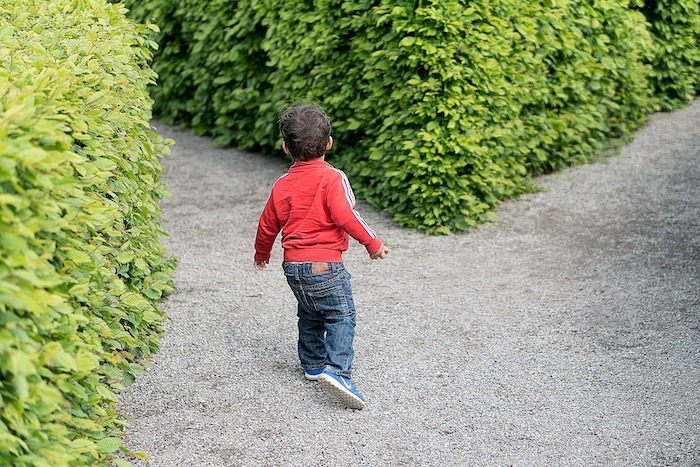Instilling the right mindset in children at an early age is essential to ensuring a happy and successful life. Students must learn that they can improve their skills with effort and the right approach. As a teacher, you can help your students to understand that their brains can grow. When you eliminate the fear of failure in your classroom, your students feel more empowered and try their best. As a result, they become more resilient and confident in how they approach learning. This concept, called growth mindset, can be easily taught to your class.
An overview of the growth mindset
Everyone has their own beliefs about their potential and abilities. That mindset is powerful and fuels our behavior.
Our mindset can shape everything we do. It helps us to interpret not only our experiences but also our future success. If that mindset is a negative one, it can hold us back from ever achieving our full potential. However, if we believe that our abilities and intelligence can grow and improve, we can excel. This is a growth mindset.
The growth mindset is characterized by a willingness to confront new challenges. Those with this mindset are eager to learn to perceive failure as an opportunity and catalyst for future development. People who assume a growth mindset are also more likely to be happy. Not only that, but they are also more likely to achieve more in their lives.

What is a fixed mindset?
A fixed mindset is the polar opposite of a growth mindset. People with fixed mindsets believe their abilities and intelligence are predetermined and unable to change in any meaningful way. They perceive their mistakes as symptoms of overall failure instead of chances to learn and grow. People with fixed mindsets are more likely to avoid risk and to fear new experiences. They are also less likely to be successful or happy in their future lives.
Why teach children about the benefits of a growth mindset?
The benefits of having a growth mindset are clear. Those who learn to adopt this way of thinking are more likely to benefit more from their education. They are also more likely to enjoy their learning experiences and crave new challenges in life. If you teach your students about the benefits of a growth mindset, you can help them to enjoy greater happiness and success as they mature.
It isn’t easy to instill a growth mindset in young people. However, if you take steps to promote this attitude, you’ll find that your students will benefit tremendously. The key to success is to prepare thoroughly, to dedicate sufficient time to complete activities, and, most importantly, to spark their curiosity.
With all this in mind, here is an easy-to-follow guide to help you introduce the growth mindset to your classroom:

Introducing the concept
Before you can carry out any activities, you need to introduce the idea of the growth mindset to your students in a way that makes sense to them. Your class first needs to understand what a mindset is. They then need to understand the difference between fixed and growth mindsets. These concepts may seem abstract, especially to younger students, so keeping your introduction light and fun will engage your class and keep everyone interested.
You can begin with a classroom discussion. Here are some questions and ideas to include:
- What does growing mean?
- What can your class name that grows?
- Compare the growth of living things such as animals and plants to the growth of our own brains.
- Explain that growth means development, change, evolving, and maturing.
- What does “mindset” mean?
- Explain that it refers to the way in which the brain perceives the world and ourselves. It influences how we look at mistakes and challenges.
- What do you think “growth mindset” means?
- Explain that it means that you believe in your own brain and its power. It also means that you know your abilities can improve when you work hard and never give up.
- What do you think a “fixed mindset” means?
- Explain that people with fixed mindsets believe they are unable to improve, even with practice. If you decide that you’re bad at something or quit at the first hurdle, that is having a fixed mindset.
As part of the discussion, you can share some examples from your life. Tell your class about a time when you were struggling but worked hard to overcome the challenge. You can then encourage your students to share their own examples.
Noticing mindsets in practice
Once your class knows what a growth mindset is, your students can begin to identify it in real-world examples. Remind your students about what a fixed mindset and a growth mindset look like in practice. Can they identify a time they used either mindset?
It’s now time to introduce the idea of switching between mindsets. In a class discussion, come up with some phrases that someone with a fixed mindset might use. Some examples may include:
- “I can’t do this.”
- “I’m no good at anything.”
- “I give up.”
Once you have a class list, it’s time to come up with some alternative phrases that change the fixed mindset to a growth one. Some examples include:
- “I may not be good at this activity yet, but at least I’m learning.”
- “I don’t like making mistakes, but at least I can learn from them and get better.”
- “I know I’m not stupid. I just need to find the best strategy to tackle this problem.”
Show the class how these new statements are more empowering since they offer a more positive perspective on challenging situations.
One effective way to reinforce the concept of fixed and growth mindsets is to reference movies and books. Ask the class to identify both mindsets in some of their favorite characters. Highlight times when those characters shifted their mindset, and pay close attention to the characters’ feelings. This is a great way to discuss the portrayal of resilience, passion for learning, and persistence in media.

Modeling the growth mindset in the classroom
It’s part of a teacher’s job to model behavior to their students. You can model how the growth mindset works in practice by sharing your own experiences. When you find something challenging, tell your students about it. Share any fixed mindset thoughts that you’re having, and demonstrate how one could see those obstacles in a more positive light.
As part of your modeling strategy, you can discuss the ways in which feelings like happiness and contentment come from perseverance. If you don’t quit when the going gets tough, you can derive great satisfaction from persisting through the challenge. You can also share your feelings of anxiety, sadness, or hopelessness when you have a fixed mindset. This helps your students to see that everyone can have negative feelings. However, they can also see that these feelings are a sign that you should change your attitude and way of thinking.
One keyword that you should teach your pupils is “yet.” This simple word transforms every fixed mindset phrase into a positive one. By simply adding “yet” to your negative phrase, you can turn it around and make it more hopeful. “I don’t know how to do this” converts into a growth-mindset phrase. You simply add the word “yet” to the end of the sentence. Immediately, the future fills with hope and positivity.

Practice makes perfect
Having a growth mindset means putting in the effort. That means you need to practice until you get it right. Reinforce the growth mindset in your classroom by praising your students whenever they display it in practice. Every time a child perseveres in trying to solve a problem, highlight their achievement. Connect a positive result with the effort that they put in, rather than simply rewarding their innate abilities. This encourages your students to take more risks and to work harder to improve their skills.
If children make mistakes, it’s important to use those as an opportunity for growth. When children are facing challenges, celebrate that setback and encourage them to solve their problem by taking a different approach. View errors and hurdles as positives, not negatives.
If you follow these steps, you’ll find that, within a few weeks, your students will begin to develop a more positive growth mindset. They will start to view challenges in a whole new light and crave new chances to improve their skills. By adopting simple strategies like reframing errors as opportunities, praising effort, and introducing the notion of “yet,” you can help your students to shift their perspective on a number of challenges in education. Even you can learn more about your own mindset and how to face problems in a more positive way.
By adopting this exciting way of thinking, you and your class can embrace the future with hope, happiness, and a potential for great success.
Photo credit: Samuel Zeller / Unsplash
Social Emotional Learning


